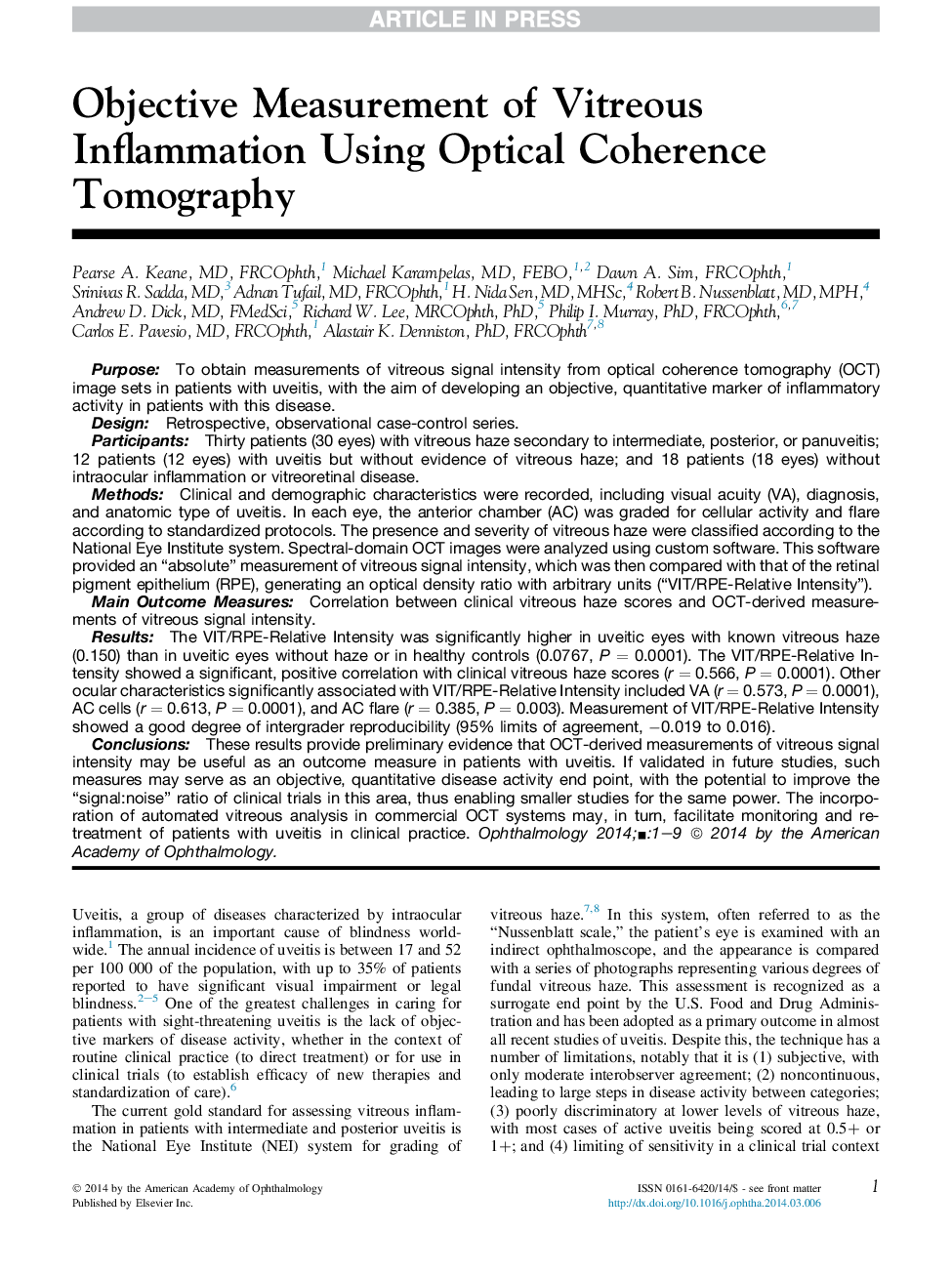| Article ID | Journal | Published Year | Pages | File Type |
|---|---|---|---|---|
| 6200534 | Ophthalmology | 2014 | 9 Pages |
Abstract
These results provide preliminary evidence that OCT-derived measurements of vitreous signal intensity may be useful as an outcome measure in patients with uveitis. If validated in future studies, such measures may serve as an objective, quantitative disease activity end point, with the potential to improve the “signal:noise” ratio of clinical trials in this area, thus enabling smaller studies for the same power. The incorporation of automated vitreous analysis in commercial OCT systems may, in turn, facilitate monitoring and re-treatment of patients with uveitis in clinical practice.
Keywords
Related Topics
Health Sciences
Medicine and Dentistry
Ophthalmology
Authors
Pearse A. MD, FRCOphth, Michael MD, FEBO, Dawn A. FRCOphth, Srinivas R. MD, Adnan MD, FRCOphth, H. Nida MD, MHSc, Robert B. MD, MPH, Andrew D. MD, FMedSci, Richard W. MRCOphth, PhD, Philip I. PhD, FRCOphth, Carlos E. MD, FRCOphth, Alastair K. PhD,
